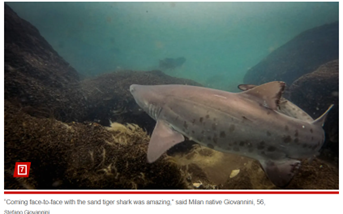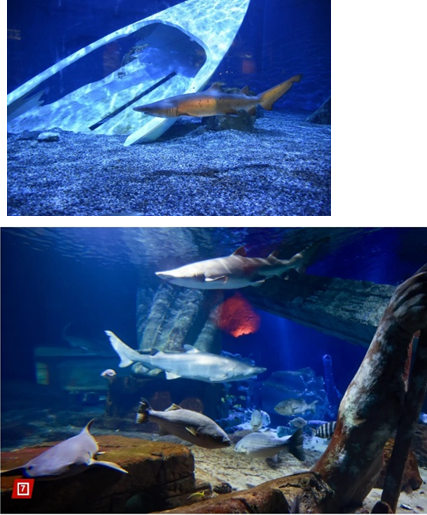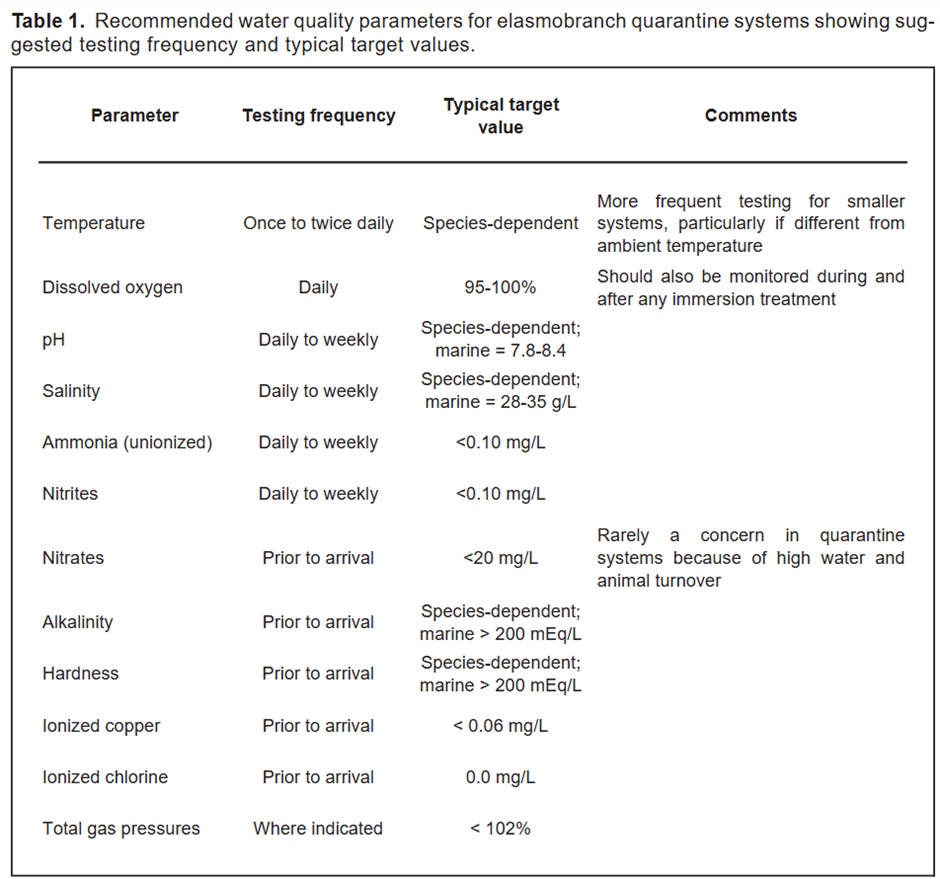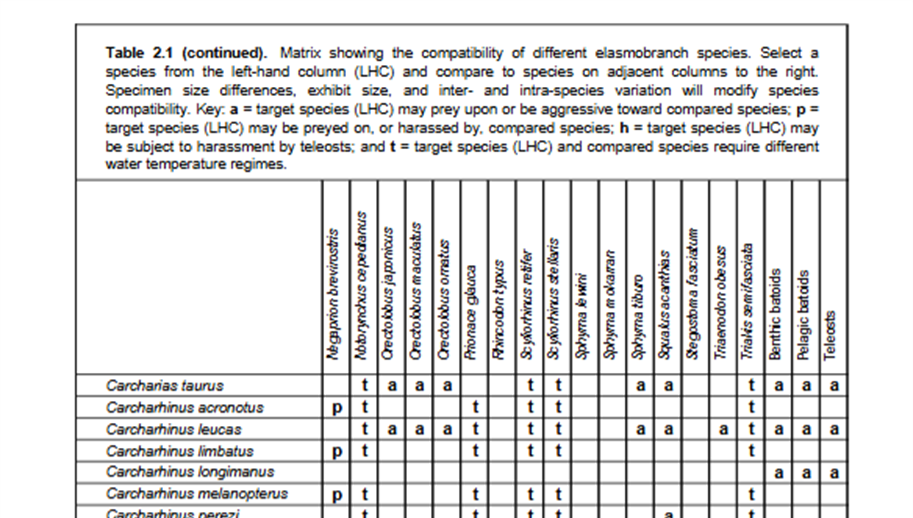Enclosure Design
Designing enclosures around the needs sand tiger sharks can offer extreme levels of creativity whilst also providing an immersive visitor experience help achieving the aquarium's educational goals. They inhabit marine habitats which can include: shallow bays, surf zones, offshore banks, underwater caves, and coral or rocky reefs (Figure 1 & 2). Simualiting their natural enviroment can enrich individuals stimulating natural behaviours and reducing stress (Wyffels et al., 2020; de Azevedo et al., 2023).
Tank Size & Design
Individuals can be housed in groups or solitary, due to their high site fidelity and docile nature they are readily incorporated into mixed species tanks (Séguigne et al., 2023). The sex ratio should be equal or female dominate to prevent excess injuries from males. Otherwise, minimum tank size should hold over 1 million Liters (264,000 Gallons), with 2–4 tanks overflow sumps with high water turnover (1 tank hour^-1) to maintain stable water parameters. Tanks should be 3-5 metres deep and at least 31 meters in length, which is slightly longer than recommended by guidelines. This is to prevent the repetitive turning that can contribute to spinal deformities (Anderson et al., 2012)(Tate et al., 2013).
STS have been known to predate on tank mates therefore an enclosure design that can allow entry for smaller teleosts in certain areas can prevent chase. Similarly, deciding which species can vary between set. Certain pairings are unacceptable due to water parameters or alternatively could be to due to a predation risk, therefore certain examples like bull sharks and white tip reef sharks should be avoided (Figure 4).
There isn't much information on lighting specification for sand tiger sharks specifically, although between the two options of natural lighting and artificial, the capabilities for artifical lighting to mimic natural is preffered as to control for optimal conditons such as temperature whilst being able to stimulate dusk and dawn to prevent. A 12H Day and Night schedule appears to be standard.
Life Support Systems & Water Quality
| Parameter | Recommended Range |
|---|---|
| Temperature | 20–24°C |
| Salinity | 32–35 ppt |
| pH | 8.0–8.4 (never <6.0) |
| Dissolved Oxygen | ≥95% saturation |
| Ammonia (NH₃) | <0.05 mg/L |
| Nitrite (NO₂⁻) | <0.1 mg/L |
| Nitrate (NO₃⁻) | <50 mg/L |
| ORP | 300–400 mV |
These values must be strictly monitored. Sand tiger sharks are tolerant to fluctuations in nitrate concentration but highly sensitive to water quality degradation and may exhbit symptoms listed in (Preventative Health).
Systems should include typical LSS systems inclduing; a strong mechanical and biological filtration to filter waste, protein skimming, ozone and UV sterilization, and at least two redundant pumps in the event of mechanical failure. Sharks occupt middle to deep therefore can have a clear bottom if maitaining clean conditions is an issue, however the use of substrate should only be limited to fine sand (0.1~1 mm) to reduce gill irritation using a siphon just above the bottom which can also filter out debris and food waste in which can spike ammonina if not removed(AZA, 2004).
Construction & Materials
Standard tank construction uses concrete reinforced with rebar, finished with epoxy coatings in order to hold a large amount of water with preventing corrosion. Structural design should use reinforced with epoxy waterproofing and separate inner walls (75–100 mm) to prevent cracking. Acrylic or reinforced Perspex should be used instead of glass to avoid the risk of fractures under pressure. If considering in using an artificial reef, using hollow rockwork constructed with PVC pipe frame can enable modular maintenance whilst also reducing the challenge of movement and reduce abrasive damage(AZA,2004). Feeding platforms should be modular and accessible from multiple points to prevent aggression if at a high holding capcity, although this can be mitigated with target training.
Health, Safety & Maintenance
The shape of the tank to be out of view can allow for safety feauture that would otherwise lose the aesthetic value such as stair-accessible diving platforms or padding that can prevent abrasion whilst also hiding the top of the tank.There should be non-slip platforms, guard rails, no overhead hazards. The Roof should extend enough to allow space for pole-feeding at any depth, although STS can occupy middle and deep waters. Designing the tank should incoporate a modular design that enables long-term adaptability and reduces maintenance disruptions . A separate, off-show holding pool is highly recommended to allow for individual isolation for medical intervention, and water quality monitoring. Pool dimensions should be at least 10 m long x 3 m wide which is three times the size of adult STS (Choromanski., 2004). The design of the dock areas should have sufficient space for equipment, emergency access, and biosecurity control (outlined . Always have accessible first-aid stations and clean zones for sample analysis .



